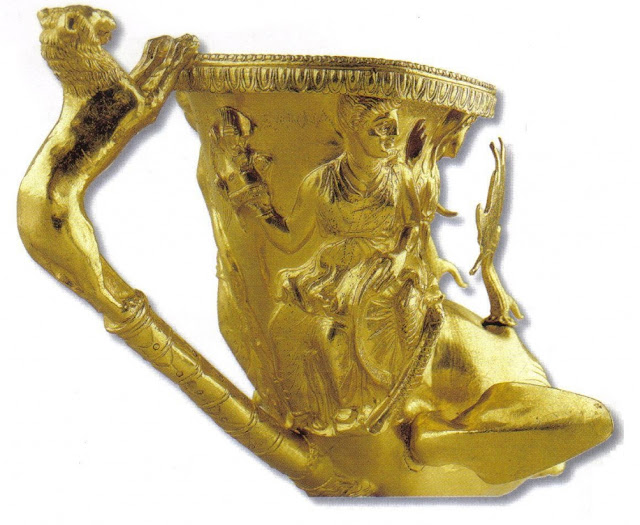Gold Diadem from the Black Sea Region, 2nd century BCE, at the Glyptothek Museum in Munich, Germany

Produced in around 150 BCE, this headdress from the Crimean Peninsula probably served as a burial object. It is composed of multiple separately crafted pieces: The lower part is dominated by a Hercules knot made up of garnet and gold elements. The ends on both sides are encased in sheaths made of gold plating to which the two half-arches of the diadem are attached by means of hinges. The half-arches are covered with a meshed scaly pattern made up of engraved leaf ornaments the edges of which are decorated with gold wires and beads. Inlaid garnets present a sensational play of colours. On the right and the left, the half-arches are finished off with decorative capsules with rich scrolled and cord trimmings. The front section of the headdress is decorated with tasselled pendants, all of which have the same structure: an array of rosette-studded discs, garnet pearls flanked with hemispheric flower bowls, and bundles of chains, to which gold beads and garnet, carnelian and white-banded sa...




